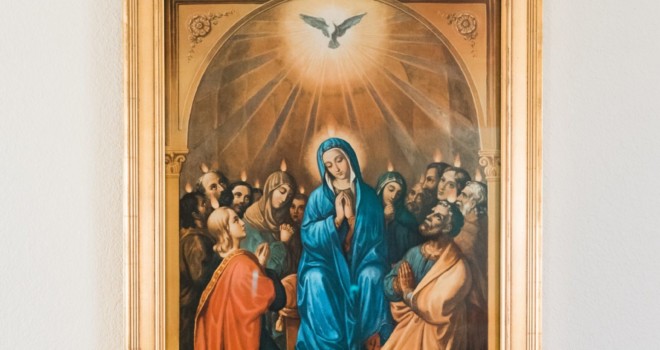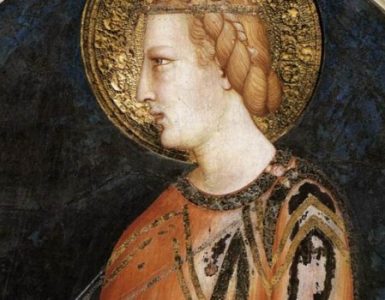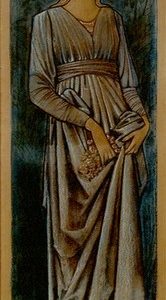Pentecost is often spoken of as the “birth” of the Church. It is an apt metaphor: The Church, which you could say had been growing in utero in the persons of Mary, the Twelve, and the small community of disciples, now emerges into the world. And when she does, we can already glimpse all of the distinguishing features by which she will be known as an adult.
The Church’s most obvious feature is that she is Charismatic — she has received the Gift, the Holy Spirit, and the manifold gifts He bestows, as evidenced by the charisms of tongues and preaching. Receiving the Holy Spirit as the common Gift of the Father and the Son (Acts 2:33-36) also immediately distinguishes her as Trinitarian. She is not a political body, nor a social service, but a living Tabernacle, making pilgrimage to the Father, through the Son, in the Spirit.
The Church that the Spirit rushed upon in tongues of fire is also Marian, Apostolic, and Petrine. We find her gathered in prayer with the Mother of Jesus — the Church’s strong, silent backbone. Just as the Spirit overshadowed Mary and formed Christ within her womb, so He overshadowed the nascent community, birthing them as the Body of Christ into the world.
The Church of Pentecost is built upon the Twelve. The apostolic “office” left vacant by Judas’ defection and death had to be filled before she began her mission to the world (Acts 1:15-26). And it was Peter, designated first among Christ’s apostles (Mt 10:2; 16:17-20), who lead the Church in this first act of apostolic succession. It was Peter who stood up “with the eleven, lifted up his voice, and address[ed]” the crowd (2:14). And the sermon that Peter preached that first day, showing how Jesus fulfilled the words of the Psalms and Prophets, established the Church as Scriptural — constantly reflecting upon and proclaiming God’s written word — as well as Christocentric in her reading of Scripture — every page is a revelation of the mystery of Christ. But Peter’s preaching was not an end in itself. It led the crowd to cry out, “What shall we do?” Peter’s response is that they must, “Repent, and be baptized every one of you in the name of Jesus Christ for the forgiveness of your sins; and you shall receive the gift of the Holy Spirit” (2:37-39).
The Church is not just Scriptural but Sacramental.
Even though all who received baptism that day were Jews, the fact that they had traveled to Jerusalem “from every nation under heaven” (Acts 2:5), intimated the acceptance of the Gentiles. It was a Catholic Church.
After almost two thousand years, the Church has grown and matured. Her doctrine, liturgy, and works have developed, to deepen; but for anyone who gazes closely at her “baby picture” — the Pentecost narrative — she is easy to recognize. The Catholic Church of today remains the Mystical Body of Christ, gestated throughout the earthly life of Mary and Jesus and born into the world on Pentecost.
✠
Photo by Grant Whitty on Unsplash












